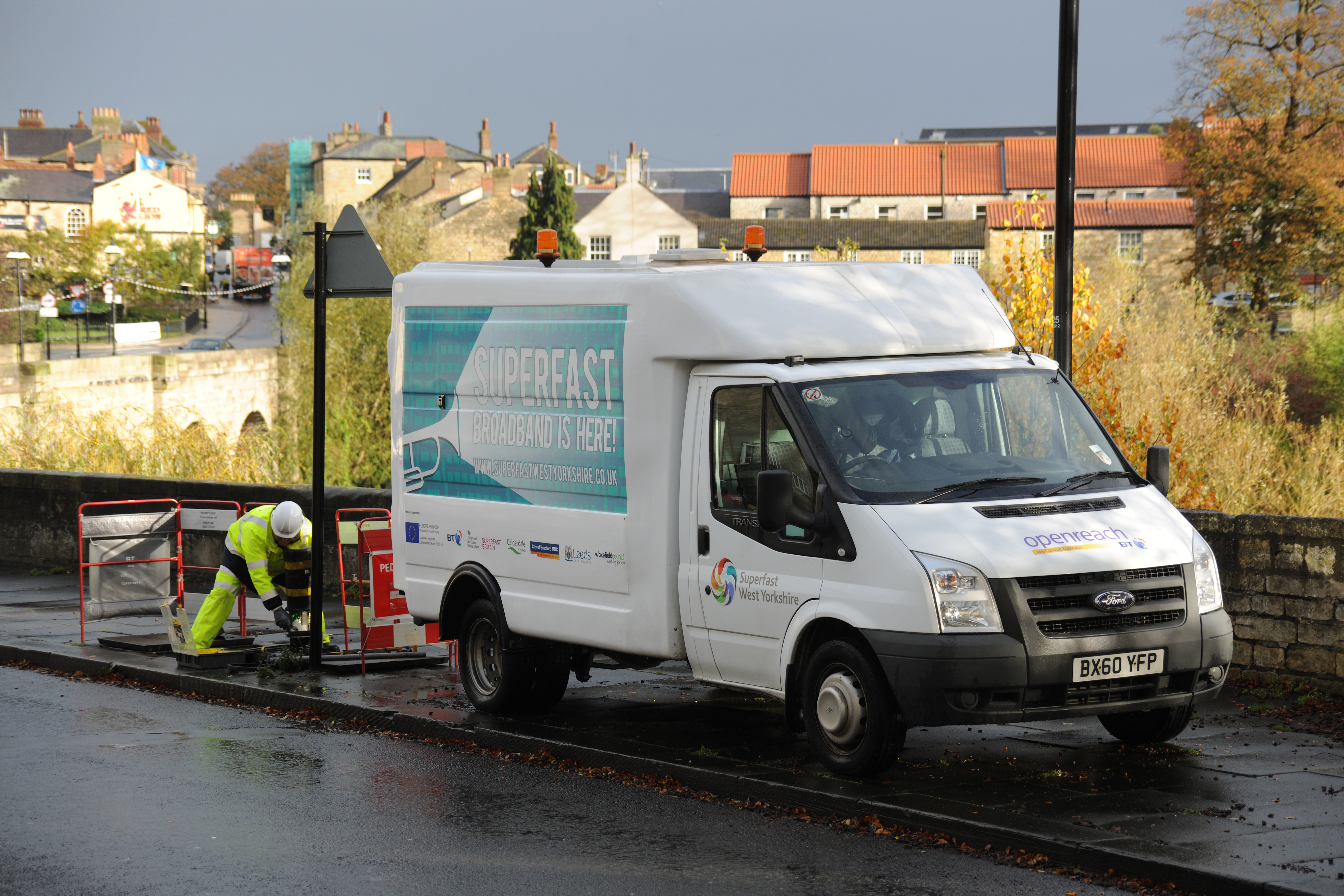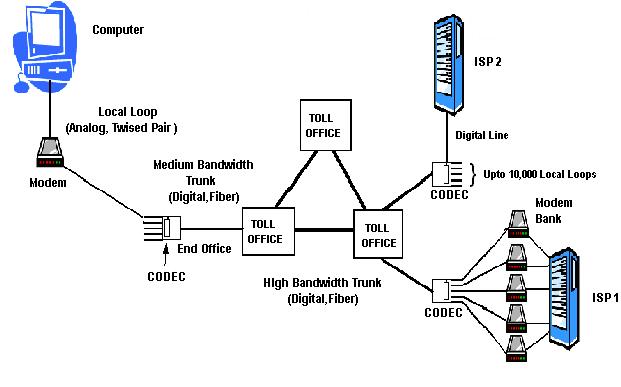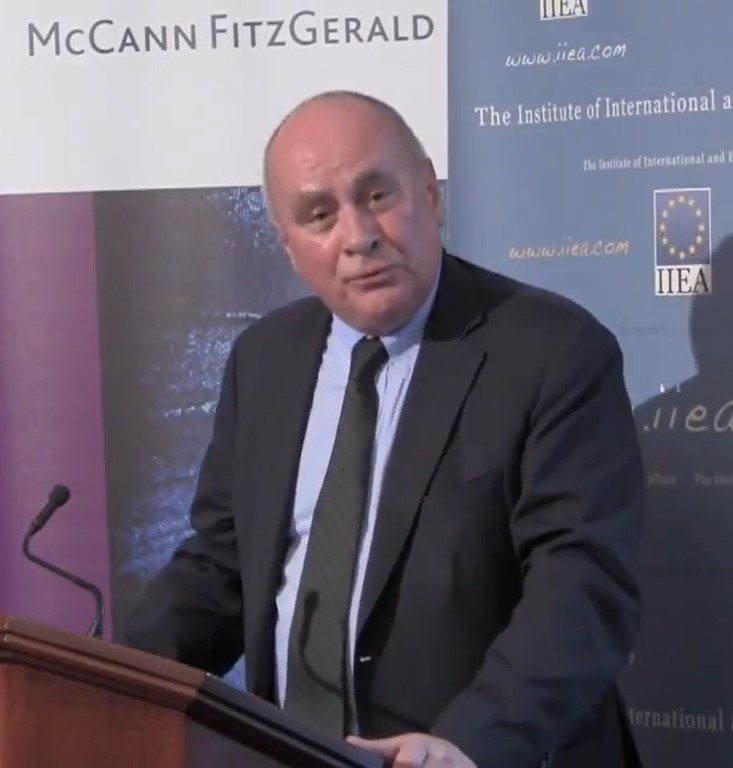|
Metallic Path Facilities
Metallic path facility (MPF) are the unshielded twisted pair of copper wires that run from a main distribution frame (MDF) at a local telephone exchange to the customer. In this variant, both broadband and voice (''baseband'') services, together potentially with a video on demand service, are provided to the end user by a single communications provider. MPF services are typically delivered through use of an MSAN. Shared metallic path facility (SMPF) is based on the same technology as MPF, but denotes a variant whereby an Internet Service Provider (ISP) provides a broadband service to the end user but hands the voice (''baseband'') service back to the PTT/ ILEC. Hence the provision of services over the end users copper wires might be shared between two providers. With SMPF, the non-incumbent service provider could purchase wholesale the voice service provision from the PTT/ILEC to allow the former to control the customer relationship for both broadband and voice services. In the ... [...More Info...] [...Related Items...] OR: [Wikipedia] [Google] [Baidu] |
Unshielded Twisted Pair
Twisted pair cabling is a type of communications cable in which two conductors of a single Electronic circuit, circuit are twisted together for the purposes of improving electromagnetic compatibility. Compared to a Single-ended signaling, single conductor or an untwisted balanced pair, a twisted pair reduces electromagnetic radiation from the pair and crosstalk between neighboring pairs and improves rejection of external electromagnetic interference. It was invented by Alexander Graham Bell. For additional noise immunity, twisted-pair cabling may be Shielded cable, shielded. Cable with shielding is known as shielded twisted pair (STP) and without as unshielded twisted pair (UTP). Explanation A twisted pair can be used as a balanced line, which as part of a balanced circuit can greatly reduce the effect of noise currents induced on the line by coupling of electric or magnetic fields. The idea is that the currents induced in each of the two wires are very nearly equal. The twis ... [...More Info...] [...Related Items...] OR: [Wikipedia] [Google] [Baidu] |
Openreach
Openreach Limited is a company wholly owned by BT Group plc, that maintain telephone cables, ducts, cabinets and exchanges that connect nearly all homes and businesses in the United Kingdom to various national broadband and telephone networks. They were established in 2006 following an agreement between BT and the UK's telecoms regulator, Ofcom, to implement certain undertakings, pursuant to the Enterprise Act 2002, to ensure that rival telecom operators have equality of access to BT's local network. Openreach manages BT's local access network which connects customers to their local telephone exchange, starting at the main distribution frame (MDF) in the exchange and ending at the network termination point (NTP) at the end user's premises. Openreach also manages the connections between the MDF and the BT Wholesale/ local-loop unbundling (LLU) termination points located in the exchange, often referred to as jumper connections. In March 2017, after various negotiations with, ... [...More Info...] [...Related Items...] OR: [Wikipedia] [Google] [Baidu] |
Broadband
In telecommunications, broadband or high speed is the wide-bandwidth (signal processing), bandwidth data transmission that exploits signals at a wide spread of frequencies or several different simultaneous frequencies, and is used in fast Internet access. The transmission medium can be coaxial cable, optical fiber, wireless Internet (radio), twisted pair cable, or satellite broadband, satellite. Originally used to mean 'using a wide-spread frequency' and for services that were analog at the lowest level, nowadays in the context of Internet access, 'broadband' is often used to mean any high-speed Internet access that is seemingly always 'on' and is faster than Dial-up Internet access, dial-up access over traditional plain old telephone service, analog or ISDN public switched telephone network, PSTN services. The ideal telecommunication network has the following characteristics: ''broadband'', ''multi-media'', ''multi-point'', ''multi-rate'' and economical implementation for a di ... [...More Info...] [...Related Items...] OR: [Wikipedia] [Google] [Baidu] |
BT Group
BT Group plc (formerly British Telecom) is a British Multinational corporation, multinational telecommunications holding company headquartered in London, England. It has operations in around 180 countries and is the largest provider of fixed-line, Internet access, broadband and Mobile telephony, mobile services in the UK, and also provides subscription television and Information technology, IT services. BT's origins date back to the founding in 1846 of the Electric Telegraph Company, the world's first public telegraph company, which developed a nationwide communications network. BT Group as it came to be started in 1912, when the General Post Office, a government department, took over the system of the National Telephone Company becoming the monopoly telecoms supplier in the United Kingdom. The Post Office Act of 1969 led to the GPO becoming a public corporation, Post Office Telecommunications. The ''British Telecom'' brand was introduced in 1980, and became independent of the R ... [...More Info...] [...Related Items...] OR: [Wikipedia] [Google] [Baidu] |
Telephone Exchange
A telephone exchange, telephone switch, or central office is a central component of a telecommunications system in the public switched telephone network (PSTN) or in large enterprises. It facilitates the establishment of communication circuits, enabling telephone calls between subscribers. The term "central office" can also refer to a central location for fiber optic equipment for a fiber internet provider. In historical perspective, telecommunication terminology has evolved with time. The term ''telephone exchange'' is often used synonymously with ''central office'', a Bell System term. A central office is defined as the telephone switch controlling connections for one or more central office prefixes. However, it also often denotes the building used to house the inside plant equipment for multiple telephone exchange areas. In North America, the term ''wire center'' may be used to denote a central office location, indicating a facility that provides a telephone with a dial tone ... [...More Info...] [...Related Items...] OR: [Wikipedia] [Google] [Baidu] |
Main Distribution Frame
In telephony, a main distribution frame (MDF or main frame) is a signal distribution frame for connecting equipment (inside plant) to cables and subscriber carrier equipment ( outside plant). Overview The MDF is a termination point within the local telephone exchange where exchange equipment and terminations of local loops are connected by jumper wires at the MDF. All cable copper pairs supplying services through user telephone lines are terminated at the MDF and distributed through the MDF to equipment within the local exchange e.g. repeaters and DSLAM. Cables to intermediate distribution frames (IDF) terminate at the MDF. Trunk cables may terminate on the same MDF or on a separate trunk main distribution frame (TMDF). Like other distribution frames the MDF provides flexibility in assigning facilities, at lower cost and higher capacity than a patch panel. The most common kind of large MDF is a long steel rack accessible from both sides. On one side, termination blocks a ... [...More Info...] [...Related Items...] OR: [Wikipedia] [Google] [Baidu] |
Local-loop Unbundling
Local loop unbundling (LLU or LLUB) is the regulatory process of allowing multiple telecommunications operators to use connections from a telephone exchange to the customer's location. The physical wire connection between the local exchange and the customer is known as a "local loop" and is owned by the incumbent local exchange carrier (also referred to as the "ILEC", "local exchange", or in the United States, either a " Baby Bell" or an independent telephone company). To increase competition, other providers are granted unbundled access. Policy background LLU is generally opposed by ILECs, which are generally either former investor-owned (North America) or state-owned monopoly enterprises. ILECs argue that LLU amounts to regulatory taking, which causes them to be compelled to provide competitors with business inputs, so they believe that LLU stifles infrastructure-based competition and technical innovation because new entrants prefer to use the incumbent's network instead of b ... [...More Info...] [...Related Items...] OR: [Wikipedia] [Google] [Baidu] |
Local Loop
In telephony, the local loop (also referred to as the local tail, subscriber line, or in the aggregate as the last mile) is the physical link or circuit that connects from the demarcation point of the customer premises to the edge of the common carrier or telecommunications service provider's network. At the edge of the carrier access network in a traditional public telephone network, the local loop terminates in a circuit switch housed in an incumbent local exchange carrier or telephone exchange. Infrastructure Traditionally, the local loop was an electrical circuit in the form of a single pair of conductors from the telephone on the customer's premises to the local telephone exchange. Single-wire earth return lines had been used in some countries until the introduction of electric tramways from the 1900s made them unusable. Historically the first section was often an aerial open-wire line, with several conductors attached to porcelain insulators on cross-arms on "te ... [...More Info...] [...Related Items...] OR: [Wikipedia] [Google] [Baidu] |
HM Government
His Majesty's Government, abbreviated to HM Government or otherwise UK Government, is the central executive authority of the United Kingdom of Great Britain and Northern Ireland.Overview of the UK system of government : Directgov – Government, citizens and rights Archived direct.gov.uk webpage. Retrieved on 29 August 2014. The government is led by the prime minister ( Keir Starmer since 5 July 2024) who appoin ... [...More Info...] [...Related Items...] OR: [Wikipedia] [Google] [Baidu] |
Level Playing Field
A level playing field is a concept about fairness, not that each person has an equal chance to succeed, but that they all play by the same set of rules resulting in formal equality of opportunity. In a game played on a playing field, such as rugby, one team would have an unfair advantage if the field had a slope. Since some real-life playing fields do in fact have slopes, it is customary for teams to swap ends of the playing field at half time. A metaphorical playing field is said to be level if no external interference affects the ability of the players to compete fairly. Some government regulations are intended to provide such fairness, since all participants must abide by the same rules. However, they can have the opposite effect, for example if larger firms find it easier to pay for fixed costs of regulation. It may be added that if the rules affect different participants differently, then they are not actually the same. Handicapping might be thought of as the opposite co ... [...More Info...] [...Related Items...] OR: [Wikipedia] [Google] [Baidu] |
Local-loop Unbundling
Local loop unbundling (LLU or LLUB) is the regulatory process of allowing multiple telecommunications operators to use connections from a telephone exchange to the customer's location. The physical wire connection between the local exchange and the customer is known as a "local loop" and is owned by the incumbent local exchange carrier (also referred to as the "ILEC", "local exchange", or in the United States, either a " Baby Bell" or an independent telephone company). To increase competition, other providers are granted unbundled access. Policy background LLU is generally opposed by ILECs, which are generally either former investor-owned (North America) or state-owned monopoly enterprises. ILECs argue that LLU amounts to regulatory taking, which causes them to be compelled to provide competitors with business inputs, so they believe that LLU stifles infrastructure-based competition and technical innovation because new entrants prefer to use the incumbent's network instead of b ... [...More Info...] [...Related Items...] OR: [Wikipedia] [Google] [Baidu] |
Ofcom
The Office of Communications, commonly known as Ofcom, is the government-approved regulatory and competition authority for the broadcasting, internet, telecommunications and mail, postal industries of the United Kingdom. Ofcom has wide-ranging powers across the television, radio, telecoms, internet and postal sectors. It has a statutory duty to represent the interests of citizens and consumers by promoting competition and protecting the public from harmful or offensive material. Some of the main areas Ofcom regulates are TV and radio standards, broadband and phones, video-sharing platforms online, the wireless spectrum and postal services. The regulator was initially established by the (c. 11) and received its full authority from the Communications Act 2003 (c. 21). History On 20 June 2001, the Queen's Speech to the Parliament of the United Kingdom, UK Parliament announced the creation of Ofcom. The new body, which was to replace several existing authorities, was concei ... [...More Info...] [...Related Items...] OR: [Wikipedia] [Google] [Baidu] |






